#pecan shellers
Text

Happy birthday, Emma Tenayuca! (December 21, 1916)
Born to a Mexican family in San Antonio, Texas, as a young child Emma Tenayuca would visit the Plaza del Zacate to see socialists and anarchists speak. Radicalized by the poverty and suffering she saw in the Great Depression, Tenayuca joined the Communist Party and worked to organize Latine workers in Texas, helping to lead a pecan sheller's strike in 1938. Facing jail several times for her activism, Tenayuca continued to fight for labor and civil rights until her death in 1999.
154 notes
·
View notes
Photo

On this day, 23 July 1999, Emma Tenayuca, Mexican-American strike leader of Nʉmʉnʉʉ descent died aged 82 in her hometown of San Antonio, Texas. Taking part in many organising efforts and strikes, she is best known for being elected strike leader of the 1938 women pecan shellers' strike, which was hugely successful. After the strike, Tenayuca was blacklisted and subjected to death threats amidst anti-communist hysteria and had to leave the state of Texas, moving to San Francisco. There she became a teacher, and returned to San Antonio in the late 1960s. More information, sources and map: https://stories.workingclasshistory.com/article/9575/emma-tenayuca-dies https://www.facebook.com/photo.php?fbid=666729248833627&set=a.602588028581083&type=3
137 notes
·
View notes
Text

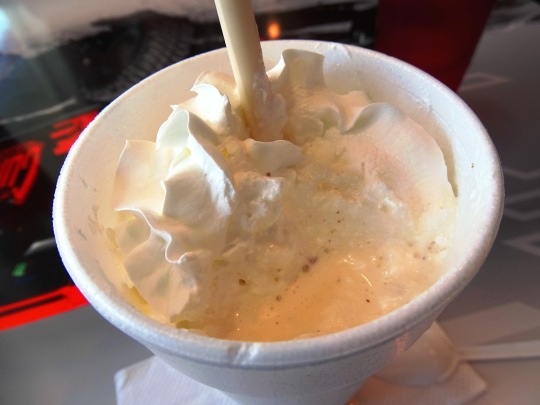


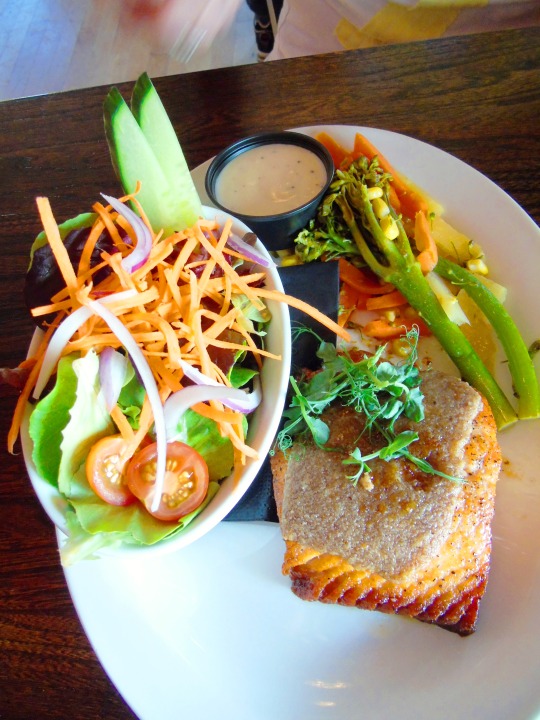

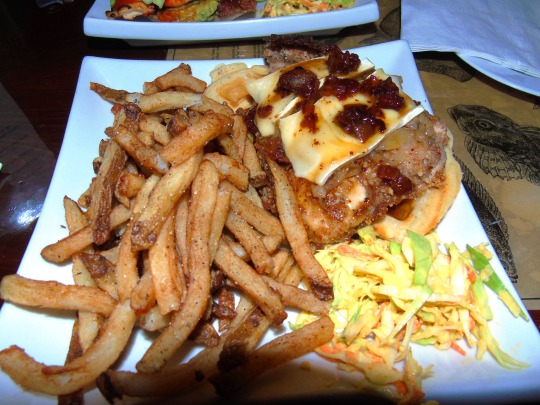



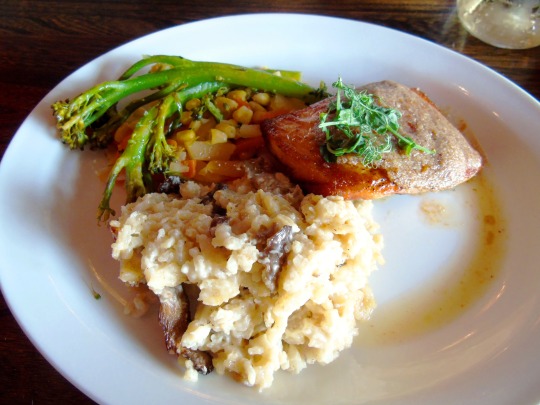
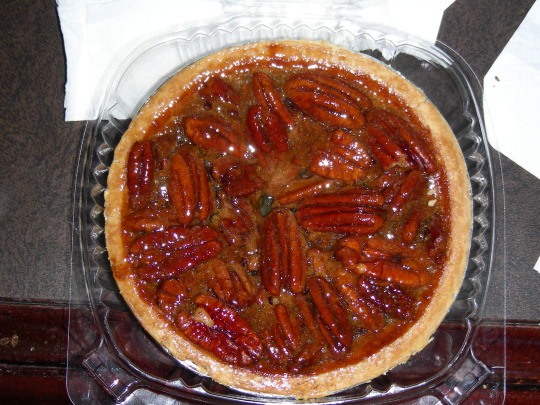
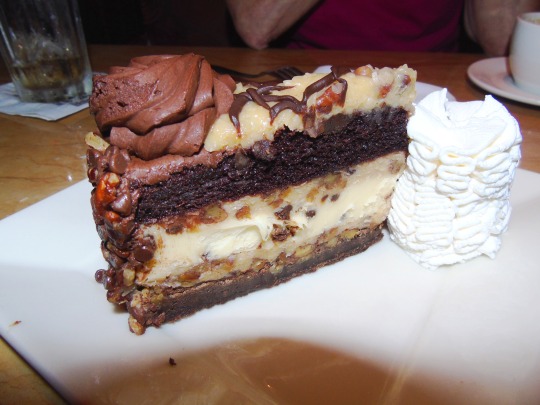

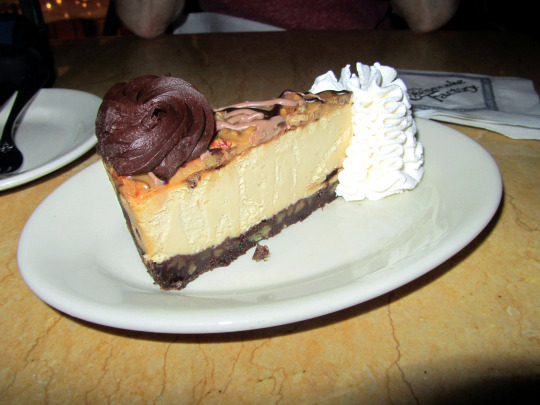
National Pecan Day
On April 14, we celebrate National Pecan Day, pecan — a uniquely American nut whose fan base counts the likes of founding fathers such as George Washington and Thomas Jefferson. Whether it’s a garnish on a salad or a stand-alone snack, caramelized or roasted, sweet or savory — pecans never fail to deliver on the enthralling taste and the ultimate nutrient density. Did you know, America is credited for 75% of the world’s total pecan production? This fun holiday was established by the National Pecan Shellers Association in 1966 to recognize and honor the workforce behind the cultivation of pecans in America.
History of National Pecan Day
On National Pecan Day, America celebrates the only nut native to its land. Pecans are a much-celebrated nut of America, used in deserts, icecreams, and snacks.
Centuries before European colonization, pecans were cultivated, processed, and consumed in America by Native people. The word ‘pecan’ is derived from the word ‘pacane,’ used by the Algonquin tribe to describe a nut that needs a stone to crack open. The tribes valued pecan for its nutrition density, availability, ease of consumption, and fulfilling taste.
In the late 17th century, the native nut caught the eye of Spanish colonists, who began cultivating large pecan orchards in the vicinity. But it wasn’t until the 18th century that the commercialization of pecans picked up the pace in the United States. By 1802, formal selling routes were established, and pecan export had commenced.
In 1882, a hybrid fruit via the budding of pecan and an adjacent wild plant was created by Abner Landrum, a cultivator from South Carolina. This resultant nut was considered to be an upgraded version of pecan. Although the hybrid seeds of Abner got lost in time, in 1876, the process of grafting was recreated by Antoine, a slave from Louisiana. Antoine presented his discovery at the Philadelphia Centennial Exposition in 1976 and thus began farming a new and improved variety of pecans throughout the country.
Today, America is responsible for three quarters of pecan production in the world. From the summer lanes of Texas to the sunny pavements of California, pecan cultivation is a year-long endeavor for thousands of American farmworkers.
In 1996, the National Pecan Shellers Association members came together to establish April 14 as National Pecan Day. The objective of the day is to celebrate the earthly wonders of this nut and to uplift the hardworking members of the industry who make the sustainable farming of pecans possible.
National Pecan Day timeline
1772 The First Plantation
Long Island farmers organize the first pecan plantation of pecan trees, propagating safe and easy ways of pecan plantation.
1775 George Washington’s Imprint
Founding Father George Washington plants a pecan tree in Mount Vernon, symbolizing the rapid popularity of pecans in America.
1943 Formalization
National Pecan Shellers Association is established to represent thousands of pecan farmers and shellers across the country
1996 Establishment of the Day
The National Pecan Shellers Association establishes National Pecan Day to honor the native nut of America.
National Pecan Day FAQs
How is 'pecan' pronounced?
The correct pronunciation of pecan is PEE-can. However, a majority of southern Americans like to say it as PA-kawn. How do you pronounce it?
Are pecan and walnut the same thing?
It’s easy to get confused, but walnuts and pecans are two different nuts from the same Junlandacea family. Walnut has a smooth exterior with a lighter color, unlike pecans, which have a chocolate brown color with definitive lines.
Can you eat pecan raw?
Yes! Pecans, like all other nuts, are edible in their raw form. You can carry a couple of these shelled nuts in your pocket to munch through the day, or you can scatter them on your salad for that extra crunch.
National Pecan Day Activities
Plan a pecan day
Host a bake off
Plant a pecan tree in your backyard
Indulge in the versatile offering of this great American nut by planning your menu around it. Start the day with fluffy pecan pancakes, then have butter pecan chicken for lunch. For a midday snack, enjoy a couple of candied pecans, and end your day with pecan-crusted salmon and some hot pecan pie.
From cookies to pies, pecans go well with any baking dish. So for National Pecan Day, host a bakeoff with your friends and family — featuring our beloved pecans.
Pecans are non-fuss plants that don’t require a liver and a half to take sapling. Plant the seeds today, so you can reap the nuts tomorrow.
5 Important Facts About Pecans
It’s a vitamin party
It’s more than a crunch
A friend to the heart
A love for centuries
A dose of pecan for Apollo
Pecans are home to 19 different vitamins and minerals, including vitamin A, vitamin E, magnesium, and potassium.
Pecan oil, processed from pecans, is recommended for those with a risk of heart disease.
Pecans have the official certification of the American Heart Association for being a ‘Heart-Healthy Food.’
A pecan tree grows to over 150 feet tall and lives for over 300 years.
Astronauts carried pecans to the moon in their Apollo space mission twice.
Why We Love National Pecan Day
Pecans are underrated
Pecans are the O.G. American nut
Pecans contribute to the economy
The sweet and crunchy texture of a pecan elevates any dish it touches. Be it candies, cookies, bread, pie, salads, or ice cream. It’s time we honor the contribution of this humble nut in our kitchen and celebrate National Pecan Day with full excitement.
While cashew came to America from Brazil and the California almonds are actually a gift of Spain, pecan is the singular nut native to America. Pecans were widely consumed by native Americans before European colonization.
The American pecan industry is worth over $3.5 billion. Just 15 states of the U.S. produce more than 75% of pecan of the world. The pecan trees are responsible for the livelihoods of thousands of families and a flourishing U.S. economy
Source
#Pecan Praline Milkshake#Pecan Caramel Brownie#Pecan Pie#travel#USA#Pecan Crusted Chicken and Waffles#Pecan Pie a la Mode#dessert#entréé#pecan crusted fresh salmon#Canada#original photography#vacation#food#bakery#restaurant#Chris' Outrageous Cheesecake#Caramel Pecan Turtle Cheesecake#Chocolate Pecan Pie#Butterscotch-Pecan Pancakes#National Pecan Day#14 April#NationalPecanDay
2 notes
·
View notes
Video
youtube
Pecans Sheller peeling machine Pecans peeler Machine Pecans shelling mac...
0 notes
Photo

On One of the Great Unsung Heroes of the American Labor Movement. Emma Tenayuca behind bars—not for the first time. She was first arrested when she was sixteen, but by the time she led the pecan shellers strike she had become a real threat to business as usual in San Antonio.
3 notes
·
View notes
Text
Nut Cracker Tool Heavy Duty Pecan Walnut Sheller Nut Opener Metal Kitchen Gadget

Nut Cracker Tool Heavy Duty Pecan Walnut Sheller Nut Opener Metal Kitchen Gadget
Auction price: $13.99
Bid count:
Buy it now: $13.99
via eBay
https://www.ebay.com/itm/Nut-Cracker-Tool-Heavy-Duty-Pecan-Walnut-Sheller-Nut-Opener-Metal-Kitchen-Gadget/153767858940?hash=item23cd4752fc:g:h0QAAOSwRqxd-3Xs
#eBay#Home & Garden#Nut Cracker Tool Heavy Duty Pecan Walnut Sheller Nut Opener Metal Kitchen Gadget
0 notes
Text

On Jan. 31, 1938, Communist labor organizer Emma Tenayuca led 12,000 pecan shellers, mostly Mexican American or Chicana women, out on strike in San Antonio, Texas to demand better working conditions and higher wages.
43 notes
·
View notes
Photo

The San Antonio Light newspaper reporting the arrest of pecan shellers’ strike leader Emma Tenayuca, San Antonio, Texas, 31 January 1938.
2 notes
·
View notes
Text
Works Cited
Clayson, W. (2002). “The Barrios and the Ghettos have Organized!” Journal of Urban History, 28(2), 158–183. doi: 10.1177/0096144202028002002
Garcia, M. (2003). Speaking Spanish in Los Angeles and San Antonio: Who, When, Where, Why. Southwest Journal of Linguistics, 22(1), 1+. Retrieved from https://link-gale-com.aclibproxy.idm.oclc.org/apps/doc/A109268629/AONE?u=txshracd2904&sid=AONE&xid=cd0309c5
Márquez, R. R., Mendoza, L., & Blanchard, S. (2007). Neighborhood Formation on The West Side of San Antonio, Texas. Latino Studies, 5(3), 288–316. doi: 10.1057/palgrave.lst.8600265
McCarthy, M. (2009). A History of Urban Renewal in San Antonio. SPECIAL THANKS, 47.
Peterson, G. E. (1994). Big-City Politics, Governance, and Fiscal Constraints. Washington, D.C: Urban Institute Press.
Rosales, R. (2000). The Illusion of Inclusion: The Untold Political Story of San Antonio. Austin, TX: Univ. of Texas Press.
Shapiro, H. (1952). The Pecan Shellers of San Antonio, Texas. The Southwestern Social Science Quarterly, 32(4), 229-244. Retrieved from http://www.jstor.org/stable/42865527
Vargas, Z. (1997). Tejana Radical: Emma Tenayuca and the San Antonio Labor Movement during the Great Depression. Pacific Historical Review, 66(4), 553–580. doi:10.2307/3642237
[Links to each respective image source are located under the “Read More” section of each post]
2 notes
·
View notes
Photo









María Rebeca Latigo de Hernández, the civil rights leader who helped advance the rights of Mexican Americans and Mexican immigrants, has been honored with a Google Doodle on what would have been her 122nd birthday.
She is also sometimes known as Maria L. de Hernández. The July 29, 2018 Google Doodle was designed to illustrate Hernández “doing what she did best – using her voice to elevate and benefit her community,” Google wrote.
Hernández literally took her voice to the masses using a new medium: Radio.
“In addition to being a powerful organizer, Hernández was also a talented orator: she became San Antonio’s first Mexican American female radio announcer, and spent much of the rest of her life speaking up against injustice and inequality across both the Mexican and African American communities,” Google notes.
The activist was also involved in workers’ rights protests. In 1938, “she took up the cause of workers’ rights in the Pecan-Shellers’ Strike,” according to the Texas State Historical Association.
Hernández was born in Garza García, near Monterrey, Mexico in 1896, according to Google. She was an immigrant, moving to San Antonio, Texas, “where she became one of the leading voices speaking against economic discrimination and educational segregation that was faced primarily by women and children of Mexican descent.”
In 1939, she visited Mexican president Lázaro Cárdenas “to express good will between Mexico and the Mexicans in the United States,” the site reports.
She was also concerned about inequality in the classroom, noting inequities faced by Mexican-American children, who often had classrooms without heat and higher student-teacher ratios than non immigrant children.
“The students are not at fault for being born with black eyes and brown hair and not with blue eyes. We are all supported by the stripes and stars of the flag,” she once said. “I want you to take this gesture of this community as a protest and disgust over the terrible conditions.”
She authored an essay called “México y Los Cuatro Poderes Que Dirigén al Pueblo,” which, according to the Texas State Historical Association, highlighted the importance of mothers and the domestic sphere. She insisted on using the Spanish language in her essays, resisting the trend of assimilation.
She also served as a midwife for those who couldn’t afford medical care.
(continue reading)
#maria l de hernandez#mexico#politics#social justice#social justice warriors#activism#inequality#racism
287 notes
·
View notes
Photo

National Pecan Day was established on April 14, 1996, by the National Pecan Shellers Association members to celebrate the wonders of this nut and to uplift the hardworking members of the industry who make the sustainable farming of pecans possible. Pecans are delicious when eaten so add some to your cereal 🥣 for breakfast or have some ice-cream 🍨 topped with pecans for dessert. How do you enjoy your pecans? #NationalPecanDay #pecan #April14 #pecans #NexusDestinations https://www.instagram.com/p/CcWrEkrLqGs/?igshid=NGJjMDIxMWI=
0 notes
Video
youtube
I love this series, but I REALLY enjoyed the pecan history here. I have family in the Tyler area, which was mentioned, and I got all nostalgic about Pecans I Have Eaten. Was very upset at never having been told of/read about the Pecan Shellers Strike, which you should definitely file under Texas Likes To Ignore Parts of History - a problem our state and the US in general is having more of lately.
Unexpected Pecan Recipe-ish:
So childhood Texas moment - a family friend was babysitting me and she had giant pecan trees in her yard, which meant that they always had a lot of pecans to cook with. And let me tell you, shelling pecans is a lot of work, because the nut shell gets into the creases in the pecan, so you have to both crack the nut and then work on it with a pick to get the shell bits out. But the friend let me in on the easiest of recipes that day - butter roasted pecans - which she had me help her make. Bake your pecans in the oven on a cookie sheet, and once you’re ready to turn them over, scatter small chunks of butter on them to melt. Oven temp around 300 and you’re just going to have to keep watching the pecans because they burn quickly, especially once you add the butter. Peek in and shuffle them around a bit once the butter starts melting to make sure they’re completely coated. IMPORTANT: once you take them out of the oven they will continue to bake on the cookie sheet so if they’re already very brown move them onto foil and let them cool. (Or be lazy like me and cook them on the foil, then move the foil off the cookie sheet once it’s out of the oven.) Sprinkle with salt. Keep in sealed container. They’re great to eat by themselves, but are also tasty sprinkled over green salads. Or added to chicken salad. But sparingly because these things are super rich.
#pecans#pecan history#Texas problematic about its history sigh#butter toasted pecans#i need pecan pie now
1 note
·
View note
Photo

On this day, 21 December 1916, Mexican American strike leader Emma Tenayuca was born in San Antonio. Most famously she led a successful strike of 12,000 pecan shelling women in 1938. More info here: https://libcom.org/history/emma-tenayuca-1938-pecan-shellers-strike Pic: Emma Tenayuca with strikers, 1938 https://www.facebook.com/workingclasshistory/photos/a.1819457841572691/2167477816770690/?type=3
139 notes
·
View notes
Photo










National Pecan Day
On April 14, we celebrate National Pecan Day, pecan — a uniquely American nut whose fan base counts the likes of founding fathers such as George Washington and Thomas Jefferson. Whether it’s a garnish on a salad or a stand-alone snack, caramelized or roasted, sweet or savory — pecans never fail to deliver on the enthralling taste and the ultimate nutrient density. Did you know, America is credited for 75% of the world’s total pecan production? This fun holiday was established by the National Pecan Shellers Association in 1966 to recognize and honor the workforce behind the cultivation of pecans in America.
History of National Pecan Day
On National Pecan Day, America celebrates the only nut native to its land. Pecans are a much-celebrated nut of America, used in deserts, icecreams, and snacks.
Centuries before European colonization, pecans were cultivated, processed, and consumed in America by Native people. The word ‘pecan’ is derived from the word ‘pacane,’ used by the Algonquin tribe to describe a nut that needs a stone to crack open. The tribes valued pecan for its nutrition density, availability, ease of consumption, and fulfilling taste.
In the late 17th century, the native nut caught the eye of Spanish colonists, who began cultivating large pecan orchards in the vicinity. But it wasn’t until the 18th century that the commercialization of pecans picked up the pace in the United States. By 1802, formal selling routes were established, and pecan export had commenced.
In 1882, a hybrid fruit via the budding of pecan and an adjacent wild plant was created by Abner Landrum, a cultivator from South Carolina. This resultant nut was considered to be an upgraded version of pecan. Although the hybrid seeds of Abner got lost in time, in 1876, the process of grafting was recreated by Antoine, a slave from Louisiana. Antoine presented his discovery at the Philadelphia Centennial Exposition in 1976 and thus began farming a new and improved variety of pecans throughout the country.
Today, America is responsible for three quarters of pecan production in the world. From the summer lanes of Texas to the sunny pavements of California, pecan cultivation is a year-long endeavor for thousands of American farmworkers.
In 1996, the National Pecan Shellers Association members came together to establish April 14 as National Pecan Day. The objective of the day is to celebrate the earthly wonders of this nut and to uplift the hardworking members of the industry who make the sustainable farming of pecans possible.
National Pecan Day timeline
1772 The First Plantation
Long Island farmers organize the first pecan plantation of pecan trees, propagating safe and easy ways of pecan plantation.
1775 George Washington’s Imprint
Founding Father George Washington plants a pecan tree in Mount Vernon, symbolizing the rapid popularity of pecans in America.
1943 Formalization
National Pecan Shellers Association is established to represent thousands of pecan farmers and shellers across the country
1996 Establishment of the Day
The National Pecan Shellers Association establishes National Pecan Day to honor the native nut of America.
National Pecan Day FAQs
How is 'pecan' pronounced?
The correct pronunciation of pecan is PEE-can. However, a majority of southern Americans like to say it as PA-kawn. How do you pronounce it?
Are pecan and walnut the same thing?
It’s easy to get confused, but walnuts and pecans are two different nuts from the same Junlandacea family. Walnut has a smooth exterior with a lighter color, unlike pecans, which have a chocolate brown color with definitive lines.
Can you eat pecan raw?
Yes! Pecans, like all other nuts, are edible in their raw form. You can carry a couple of these shelled nuts in your pocket to munch through the day, or you can scatter them on your salad for that extra crunch.
National Pecan Day Activities
Plan a pecan day
Host a bake off
Plant a pecan tree in your backyard
Indulge in the versatile offering of this great American nut by planning your menu around it. Start the day with fluffy pecan pancakes, then have butter pecan chicken for lunch. For a midday snack, enjoy a couple of candied pecans, and end your day with pecan-crusted salmon and some hot pecan pie.
From cookies to pies, pecans go well with any baking dish. So for National Pecan Day, host a bakeoff with your friends and family — featuring our beloved pecans.
Pecans are non-fuss plants that don’t require a liver and a half to take sapling. Plant the seeds today, so you can reap the nuts tomorrow.
5 Important Facts About Pecans
It’s a vitamin party
It’s more than a crunch
A friend to the heart
A love for centuries
A dose of pecan for Apollo
Pecans are home to 19 different vitamins and minerals, including vitamin A, vitamin E, magnesium, and potassium.
Pecan oil, processed from pecans, is recommended for those with a risk of heart disease.
Pecans have the official certification of the American Heart Association for being a ‘Heart-Healthy Food.’
A pecan tree grows to over 150 feet tall and lives for over 300 years.
Astronauts carried pecans to the moon in their Apollo space mission twice.
Why We Love National Pecan Day
Pecans are underrated
Pecans are the O.G. American nut
Pecans contribute to the economy
The sweet and crunchy texture of a pecan elevates any dish it touches. Be it candies, cookies, bread, pie, salads, or ice cream. It’s time we honor the contribution of this humble nut in our kitchen and celebrate National Pecan Day with full excitement.
While cashew came to America from Brazil and the California almonds are actually a gift of Spain, pecan is the singular nut native to America. Pecans were widely consumed by native Americans before European colonization.
The American pecan industry is worth over $3.5 billion. Just 15 states of the U.S. produce more than 75% of pecan of the world. The pecan trees are responsible for the livelihoods of thousands of families and a flourishing U.S. economy
Source
#Pecan Praline Milkshake#Pecan Caramel Brownie#Pecan Pie#travel#USA#Pecan Crusted Chicken and Waffles#Pecan Pie a la Mode#dessert#entréé#pecan crusted fresh salmon#Canada#original photography#vacation#food#bakery#restaurant#Chris' Outrageous Cheesecake#Caramel Pecan Turtle Cheesecake#Chocolate Pecan Pie#Butterscotch-Pecan Pancakes#National Pecan Day#14 April#NationalPecanDay
1 note
·
View note
Photo

The pecan is a nut from a species of hickory that originates from the southern United States and northern Mexico. Because of their rich and buttery flavor, crunchy texture, and natural sweetness, pecans are widely used in appetizers, desserts, and main dishes alike. Pecans are considered a nutrition powerhouse due to the richness of healthy fat, high-quality protein, fiber, vitamins, and minerals. Raw pecans also contain no cholesterol or sodium and are low in carbohydrates. According to the National Pecan Shellers Association*, unroasted and unsalted pecan pieces have been designated as a heart-healthy food by the American Heart Association.
A recent study** shows that incorporating 1.5 oz pecans (one small handful) into a daily American diet can lead to an improvement of cardiovascular risk factors, such as elevated blood glucose level and insulin resistance, in otherwise healthy overweight and obese adults. @healiapp has several delicious recipes like our Low-Carb Roasted Cinnamon Pecans. Find these and others in the app to try on your own!
*National Pecan Shellers Association. (2021, June 14). Nutrition in a Nutshell. ILovePecans. Retrieved October 2, 2021, from https://ilovepecans.org/nutrition-in-a-nutshell/.
**McKay, D. L., Eliasziw, M., Chen, C., & Blumberg, J. B. (2018). A Pecan-Rich Diet Improves Cardiometabolic Risk Factors in Overweight and Obese Adults: A Randomized Controlled Trial. Nutrients, 10(3), 339. https://doi.org/10.3390/nu10030339
0 notes
Text
Emma Tenayuca (1916-1999)

photo from Anne Lewis’ A Strike and an Uprising
Emma Tenayuca was an outspoken activist who fought for laborer, migrant, and women’s rights. Tenayuca grew up as a radical in her San Antonio community, rallying other Mexicans into political action to gain better wages and opportunities. Best known as the organizer of the largest labor strike in San Antonio history, the 1938 Pecan Shellers’ Strike, Tenayuca helped shape solidarity amongst Mexicans during and post-Repatriation. Despite the quick flame of Tenayuca’s participation in the Mexican-American labor movement, her work made way for the movement to include gender and class dynamics.
Emma Tenayuca understood from a young age the injustices that were happening in her community. Inspired by the Mexican Revolution and then governor-candidate Ma Ferguson, Tenayuca adopted hard stances on transnational politics, labor rights, and civil rights. Because her family was economically affected by the Great Depression, she had a personal stake in her reasons for political participation. She took it upon herself to become involved in efforts to combat wage theft of Mexicans, getting arrested at age 16 for joining the Finck Cigar Company strike in 1933 after seeing her local government and church ignore the female labor force’s demands.
She was intrigued by election politics in both the U.S. and Mexico. In 1936, Tenayuca joined the Communist Party - pusing for “socialist aspects of New Deal Liberalism... to reform and regulate business and to create an economic safety net for Americans.” 4 Because of the community’s distrust of local politicians, Tenayuca structured worker political participation through her leadership in the Workers Alliance of America - taking command of the rights that were often ignored by employers and representatives alike.
in 1937, Tenayuca helped organize protests after news of U.S. Border Patrol agents severely beating Mexicans came to regional attention. While the protests ended in arrests for many involved, Tenayuca went on a year later to organize the Pecan Shellers’ Strike - a three-month-long protest to increase the wages for the female-dominated pecan production industry. This strike was met with conflict by police intervention, who came into protests on “riot duty” and tear-gassed, beat, and arrested protesters in a grand show of violating civil liberties.5
While the Strike when on to successfully increase wages for the workers, in 1939 due to Tenayuca’s communist affiliations, she was asked to step down from her position of leadership so as to maintain the legitimacy of the labor movement. Tenayuca was targeted and blacklisted by local businesses in San Antonio for her communist beliefs. By 1941, she was forced out of the community all together.
While Tenayuca stopped labor organizing after her departure from San Antonio, her adult life in California saw other opportunities to teach. Chicanx activists and scholars were inspired by Tenayuca and she helped advise their work up until her death in 1999.6
6 notes
·
View notes